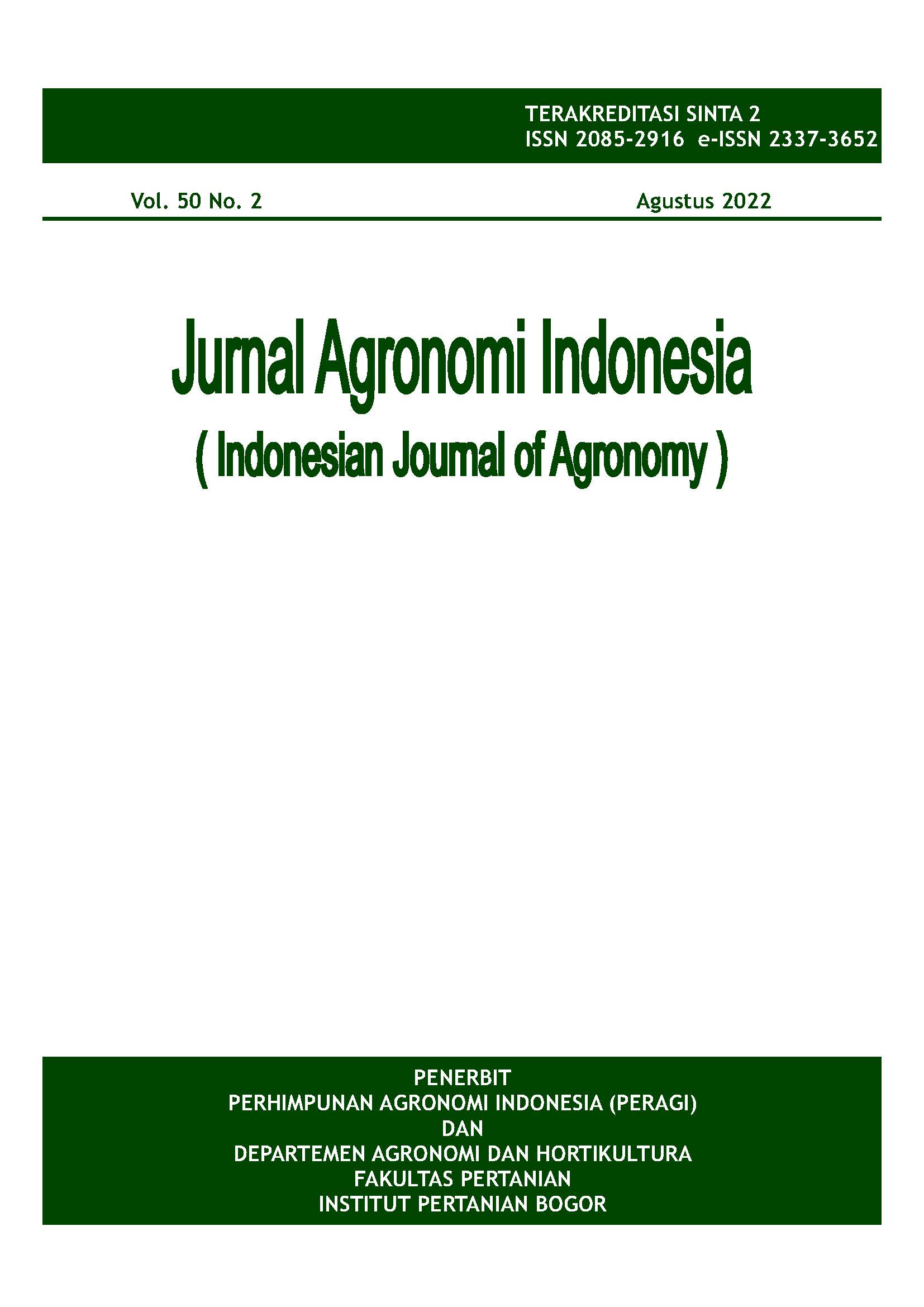Genetic Diversity of Graptophyllum pictum (L.) Griff from Eastern Indonesia Ethnics Based on Sequence-Related Amplified Polymorphism
Abstract
Indonesia is in second after the Amazon Rainforest, with the world’s highest number of endemic medicinal plants. Handeuleum (Graptophyllum pictum (L.) Griff) is one of the medicinal plants which Indonesian people have widely used. However, information on its genetic diversity is still lacking. This study aimed to achieve information about the genetic diversity of 52-accessions of G. pictum (L.) Griff from 11 Eastern Indonesia ethnics based on SRAP molecular marker. This study was conducted from November 2018 to January 2019. Fifty-two accessions of G. pictum (L.) Griff and 16 combinations of SRAP primers were used in this research. Diversity analysis was carried out based on the similarity index and dendrogram using NTSYS 2.0 program and PopGen 1.3. Forty-nine loci (44 polymorphic loci and five monomorphic loci) were found by using eight selected primer combinations with a percentage of polymorphic was 88.55%. The diversity between accessions was high (86%); meanwhile, between ethnicities was low (47.23%). Demta ethnicity had the highest diversity (81.63%), while Auyu had the lowest (2.04%). According to the dissimilarity index (DI) or diversity value which showed the kinship level, Bajawa and Auyu have the farthest kinship (DI = 1.0720). Therefore, the information in this research may benefit for supporting breeding programs and conservations of handeuleum.
Keywords: dendrogram, handeuleum, medicinal plants, SRAP













